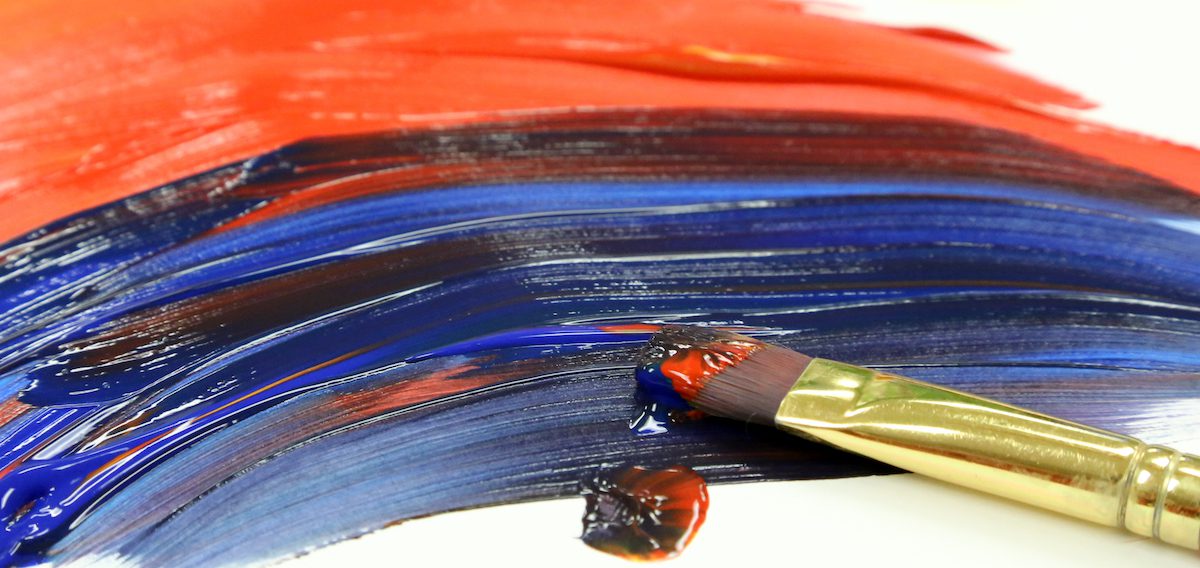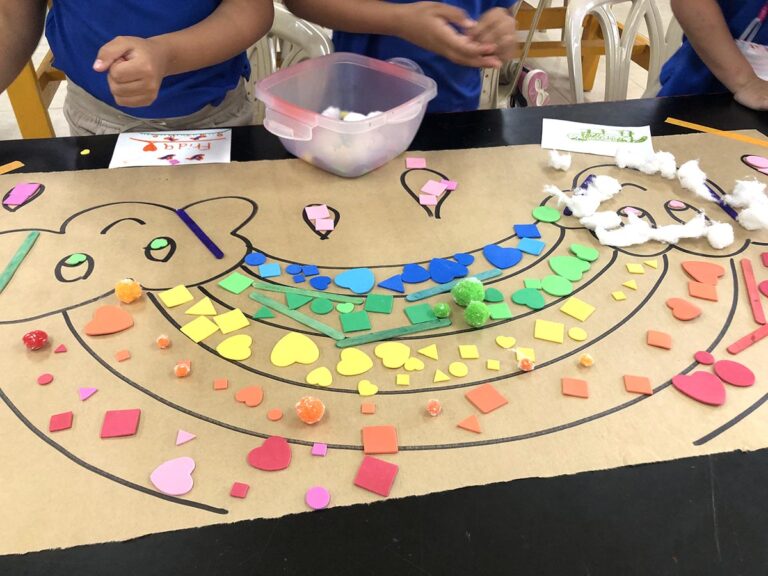When I first began teaching and learned I would have to teach three-year-olds art, I panicked. How would I keep those tiny tots engaged for 42 minutes?
It turns out it isn’t hard, as long as you’re willing to sing, dance, and take play very, very seriously. When you do that, preschool art class can be so much fun!
Here are 8 tips and tricks to keep the littles captivated and creating.
1. Be aware of “The Magic 8-Minute Mark.”
These little learners are still adjusting to the routines of school. I’ve found they can operate for about eight minutes before they need to break for some movement. Keep this in mind when planning out your time with them!
2. Chunk your directions and be willing to incorporate centers.
Breaking your instruction into small chunks is helpful for short attention spans. In addition, this way of teaching allows for short, regularly-timed breaks. Centers allow for movement between activities. Having different types of activities allows students to come back renewed and ready to attend when you have to give directions.
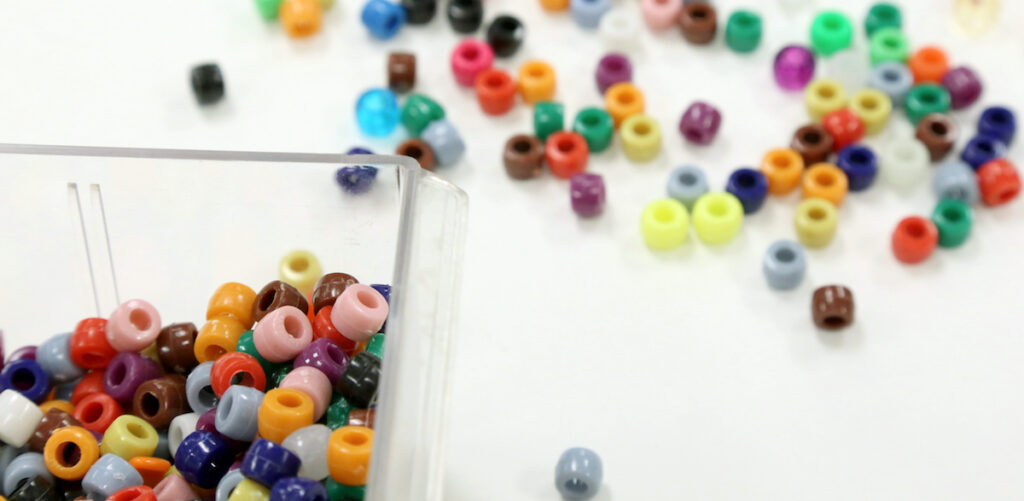
3. Make Learning Vocabulary and Concepts Physical
Consider doing “calisthenic art vocabulary.” For example, teaching orientation terminology like “horizontal” and “vertical” becomes tangible when you have students repeat the term along with making a motion.
For “horizontal,” have students start with their arms outstretched. Then, have them alternate moving their arms across their chest while chanting the syllables to the word “hor-i-zon-tal.” For “vertical,” students arms can go up and down their body, bending at the elbows as the arms travel down. Movement is one way to tame the wiggles while also enforcing meaning through muscle memory.
4. Frequently change the pace of your instruction.
Whenever I feel attention slipping away, I start teaching in slow motion. Then, I switch to hyper drive. Modifying the speed simply shakes up the room. It brings the focus back to my words and actions.
5. Have students hunt for materials.
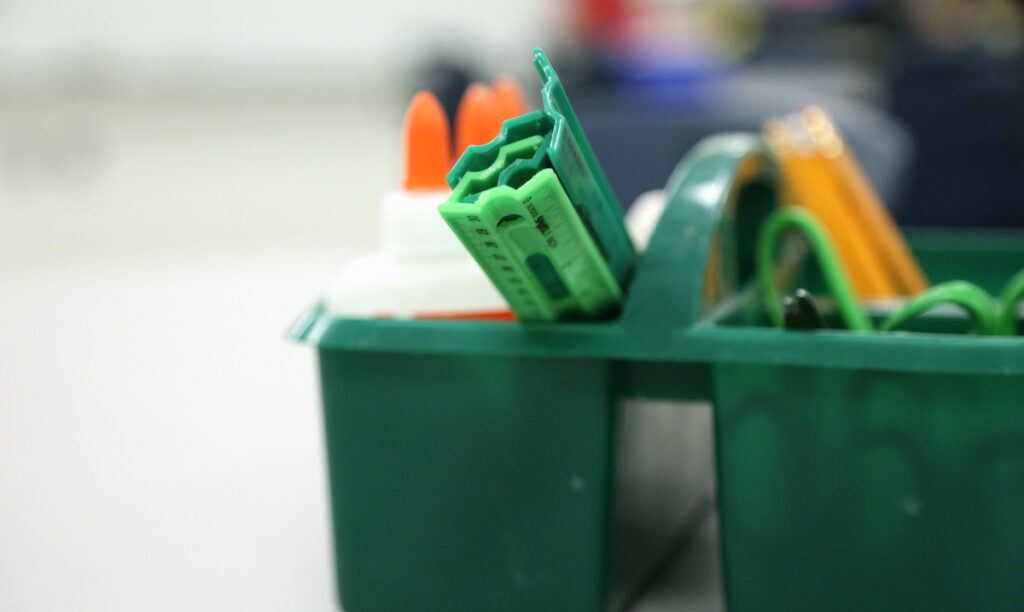
Let kids find “hidden” art materials around the room. You might say, “Let’s look and see if we can find where we keep the markers!” It gives them practice looking carefully and allows for frequent movement. It also helps them interact with each other; preschoolers are just starting to negotiate friendships and this is a natural way to foster that development.
6. Use music to your advantage.
Whatever you can put to music, do it! Little ones respond more to modulations in your voice. Create your own melodies and sing a direction. Then, have them sing it back to you. Watch and be amazed at how they attend.
7. Be playful and embrace the ridiculous.
A little silly goes a long way with preschoolers. Wear a costume, silly hat, direct the lesson with a puppet, or speak in a different accent or tone. Any break from the ordinary will capture their attention.
8. Allow for experimentation.
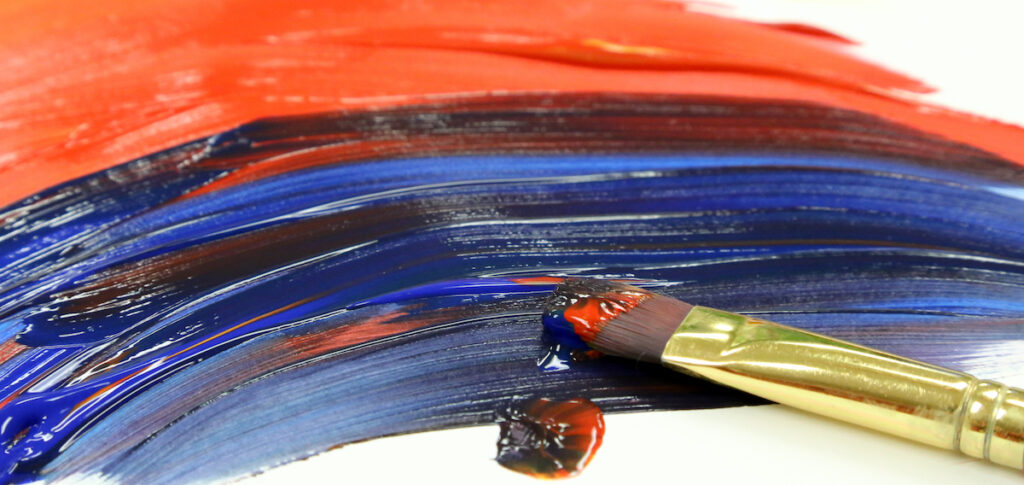
Once in awhile, forgo a formal plan and let them experiment with materials. See what materializes. Sometimes it is magical. Give yourself permission to let it go when it isn’t.
There you have it! Go forth and teach those littles with confidence. Don’t forget to dance and sing a bit while you’re at it.
What tips and tricks do you use with preschoolers?
Did you ever have a disastrous preschool art period? What happened? What did you learn from it?
Magazine articles and podcasts are opinions of professional education contributors and do not necessarily represent the position of the Art of Education University (AOEU) or its academic offerings. Contributors use terms in the way they are most often talked about in the scope of their educational experiences.
